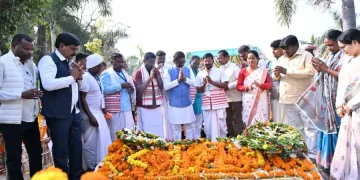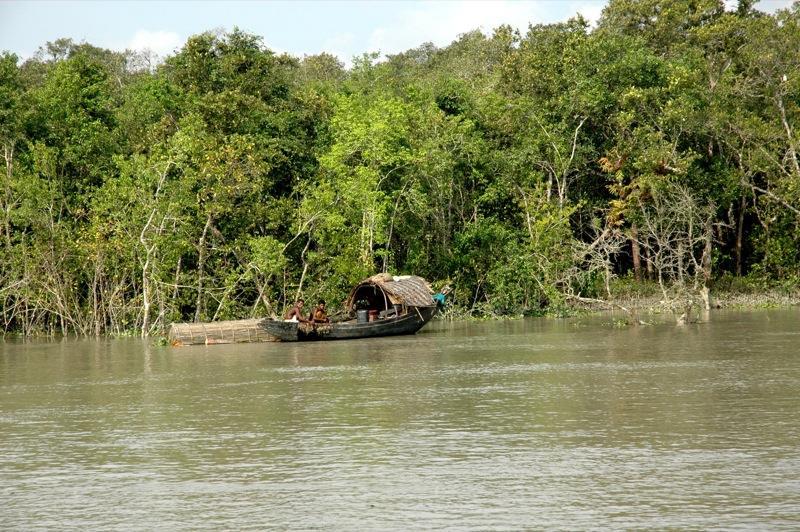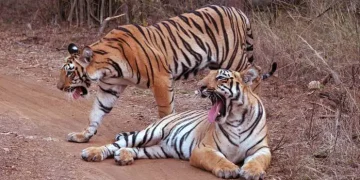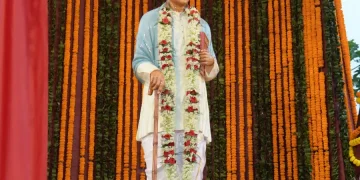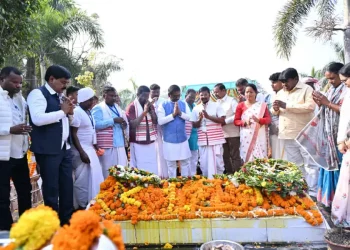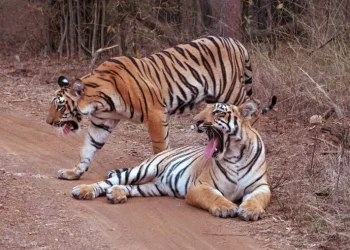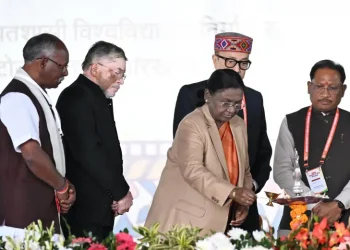Kolkata
“Hell is empty and all the devils are here”: William Shakespeare.
This Shakespearean quote may not be wholly untrue for Sandeshkhali, the island boondocks adjoining the frighteningly mysterious Sunderbans — or you may say a part of extended Sunderbans bordering Bangladesh — which is Bengal’s own version of what they call Never Never Land.
On January 5, alleged henchmen of a local politician Sheikh Shahjahan attacked and gave fractured heads to Enforcement Directorate officials who had gone to raid his house in connection to a multi-crore ration scam. The second incident took place one month later when hundreds of women mostly belonging to the local tribal communities came out in protest against the alleged land grab and sexual exploitation by the musclemen of the powers that be. They gheraoed the local police station demanding the arrest of Shahjahan, Shibu Hajra and Uttam Sardar — three local politicians and district board members.
But before discussing the present situation, it is worth tracing the backward linkages of Sandeshkhali and the neighbouring Sunderbans.
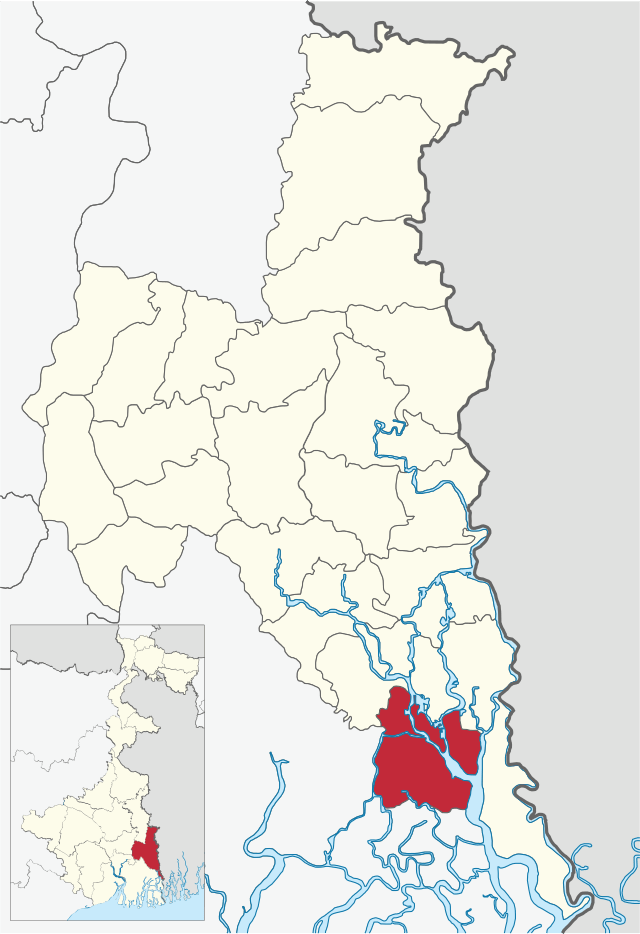
History Of Migrations And Beliefs And Present Status
Devils did not ‘rule’ Sandeshkhali from eternity. For, another writer of Bengali origin Amitabha Ghose wrote extensively about this rough country surrounded on all sides by the wide rivers, backwaters, creeks and the animals infesting them.
And Ghose writes in Hungry Tide how: In the beginning…there was nothing but forests here. There were no people, no embankments, no fields. Just kada and bada, (mud and mangrove). At high tide most of the land vanished under water. And everywhere you looked, there were predators – tigers, crocodiles, sharks, leopards…This was a time when people were so desperate for the land that they were willing to sell themselves for a bigha or two.
Though the immediate geopolitical reference of the area is Sandeshkhali II Block, one cannot lose sight of the adjoining regions of Sunderbans delta of North and South 24 Parganas. Thanks to their geopolitical unity.
As for Sandeshkhali, it is a part of the North Bidyadhari Plain, one of the three physiographic regions in the district located in the lower Ganga-Hooghly Delta almost at the mouth of Bay Bengal.
Sandeshkhali is entrapped on all sides by Rivers Vidyadhari, Raimangal, Dansa and Kaindi. Full of marshes, the region is bounded on all sides by semi-urban villages like Hingalganj, Basanti, Gosaba — the region which ironically houses a Bidhoba Para or village of the widows thanks to the man-eating Royal Bengal Tigers.
The tribal people are primarily the descendants of Oraons, Santhals, Mundas etc and possibly migrated to this region from Chotanagpur and Rarh Banga during colonial era. The Sardars of this region too are tribals and one of the early settlers of this place. They also migrated from the present Bangaldesh in the wake of Partition. In both the regions, like in many other river islands of Sunderban delta of North and South 24 Parganas districts, the tribal people were “imported” by the British landlords for Indigo cultivation.
Many older people believe, the British Sahibs’ lust for Indigo money was one of the main reasons why Sandeshkhali, Jeliakhali, Dhamakjhali, Hingalganj, Shamsherganj etc came into being by cleaning up the “Bada” or mangrove forests.
“In those days, many of our ancestors believed that the men were the sons of the Sun the God. At first, the world was covered with water post which the Sun lay egg out of which reptiles were created. Upon Sun’s orders, the reptiles created mud which then dried up. As the mud heated receiving Sun’s heat the eggs too heated up and gave birth to birds which were arrogant and did not worship Sun. So he created a man and a woman out of mud,” claims Ganapti Sardar, a local.
He, however, conceded that much of their history is loaned out from the other tribal races and that the men of his origin have lost much of their history.

But that is an anecdote. Historically speaking in the 18th century, Tilman Henckell, a British judge floated the Sunderbans Plan under which the vast swathes of marshy lands, salt lakes and mangroves were converted into agricultural land and the revenue was distributed among the people.
However, intermittent conflicts between the British and the local zamindars derailed the initiative which was floated again in 1831. This time, tribal people were brought in from what was known as Rarh Bengal — Bankura, Birbhum and surrounding of Chhotanagpur and Odisha.
The tribals cleared the forests. During this time, between 1881 and 1916, about 700 people were killed by tigers in the Sunderbans; most of them presumably tribal. This can conveniently be found in the records of State forest department. A century and more later, the situation has not changed much save the import of some stray television sets and smart phones often tossed up as a part of some government scheme during elections. The trend continues.
Sandeshkhali is only a part of the Sunderbans deltas mostly comprising river islands at the mouth of Bay of Bengal but the tribal population of this area is not confined to this region only. They are spread all over the neighbouring regions of Sunderbans.
Indeed, more than two lakh tribals remain the most marginalised demographic group in the Sunderbans. This, despite the fact that they were the earliest settlers of the place.
Informs a professor of Oceanography at Jadavpur University how the people, most of whom are tribals, have to venture deep inside the forests on account of dwindling fish population due to climatic changes. This makes them fall prey to tigers and according to him, about 85 percent tiger attacks take place deep inside the forests in the narrow creeks of Sunderbans.
And the tribals don’t have other means to fall back on due to lack of enough education and loss of agricultural lands on account of advancing sea and of course grabbing by local dons.
MEANWHILE
The National Commission for Scheduled Tribes (NCST) team reached Sandeshkhali on Thursday morning. The Commission received over 23 complaints of forcible land grabbing and torture during their interaction with locals. NCST acting vice-chairperson Ananta Nayak said they have also received complaints against a politician, which they would include in their report to the President.
(To be continued)

